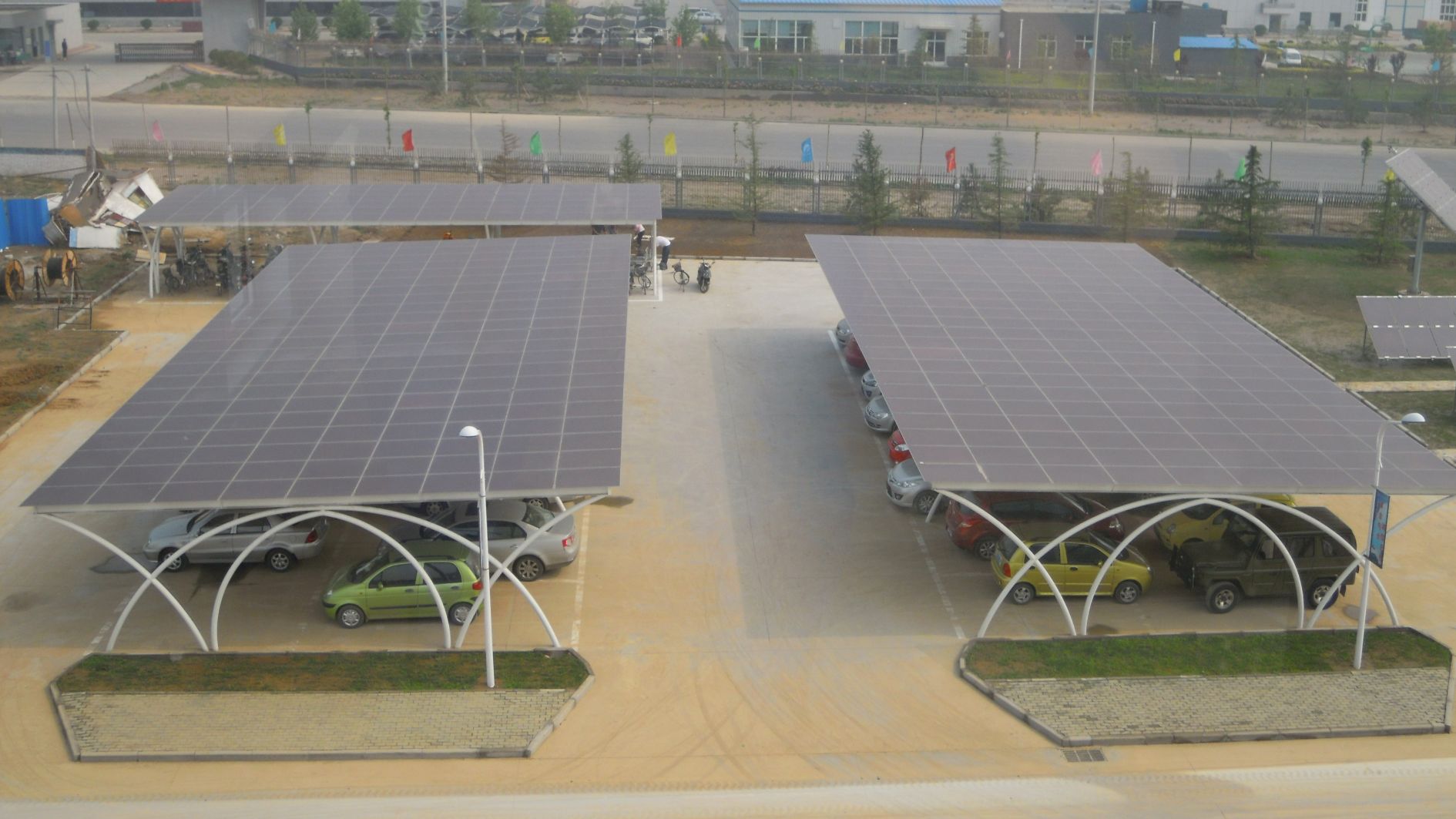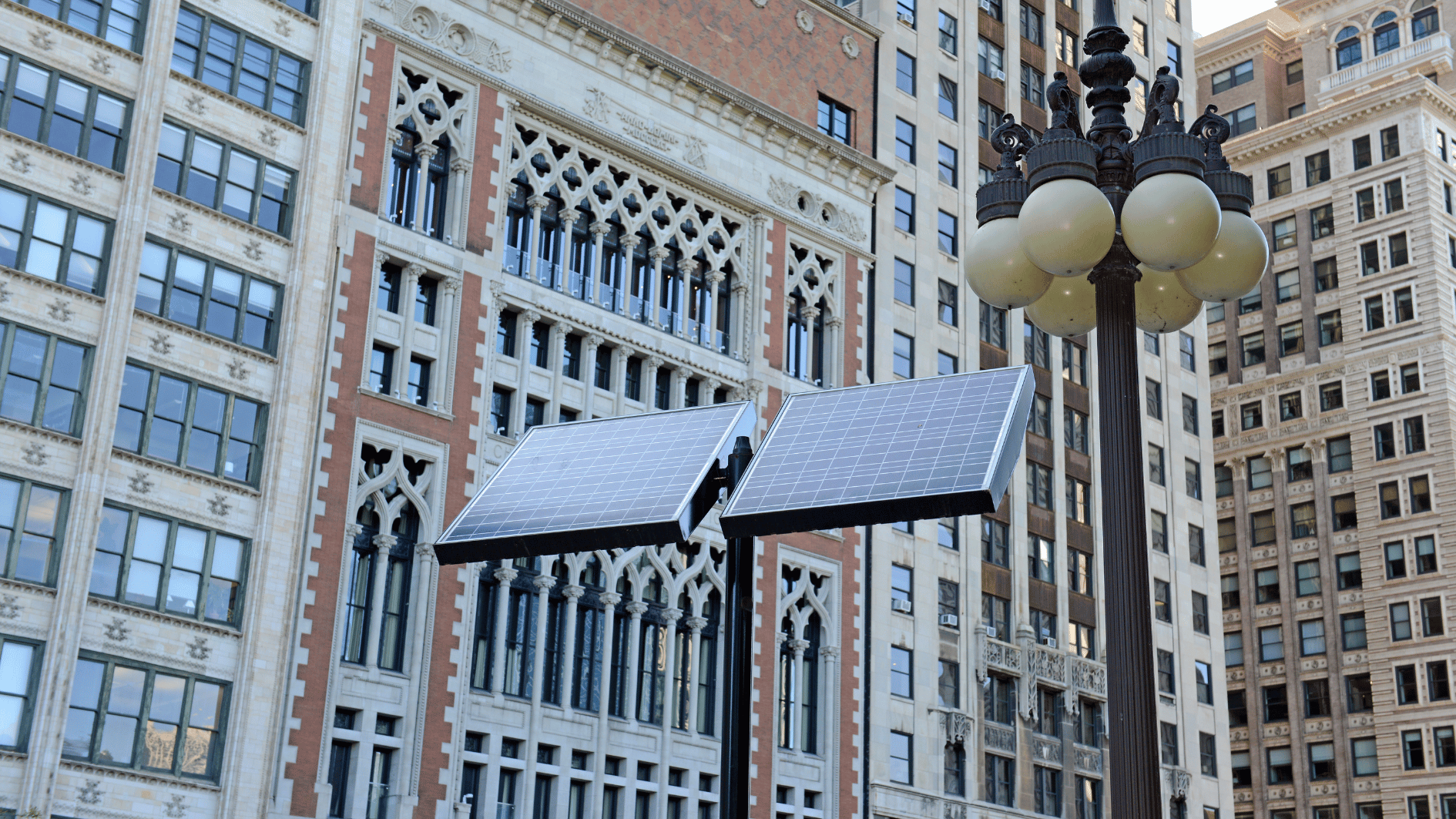Image source: Canva.com
As cities continue to grow and the demand for sustainable energy rises, integrating solar panels into urban environments has become both a necessity and a challenge. Urban areas face unique obstacles – limited space, architectural aesthetics, and shading from tall buildings – that can make traditional solar installations difficult. However, innovative solutions are emerging to overcome these barriers, transforming cityscapes into hubs of renewable energy.
The Challenges of Solar in Cities

Limited Rooftop Space
Unlike suburban or rural areas with expansive rooftops or open fields, city buildings often have restricted space for installing solar panels.

Shading and Orientation Issues
High-rise buildings can cast shadows on potential solar installations, reducing their efficiency. Additionally, the fixed orientation of many urban rooftops might not align optimally with the sun.

Aesthetic Considerations
In cities where architectural design and historical preservation are prioritized, the visual impact of traditional solar panels can be a deterrent.

Regulatory and Structural Constraints
Building codes, zoning laws, and structural limitations of older buildings can complicate solar panel installations.
Innovative Solutions for Urban Solar Integration
Despite these challenges, a range of cutting-edge technologies and design strategies are making solar energy viable in even the densest urban areas.
Building-Integrated Photovoltaics (BIPV)

- What It Is: BIPV systems integrate solar cells directly into building materials, such as facades, windows, and roofs.
- Benefits: These systems blend seamlessly with architectural designs, maintaining aesthetics while generating power. Solar shingles, glass facades, and curtain walls embedded with photovoltaics are prime examples.
- Case Study: The Edge building in Amsterdam uses BIPV extensively, making it one of the greenest office buildings in the world.
Solar Windows
- What It Is: Solar windows use transparent photovoltaic technology to generate electricity while allowing light to pass through, functioning like traditional windows.
- Benefits: Ideal for skyscrapers and glass-fronted buildings, they convert vertical space into energy-generating surfaces without compromising natural lighting.

- Emerging Technologies: Companies like Ubiquitous Energy are developing highly efficient, transparent solar window technologies that are gaining traction globally.
Vertical Solar Panels

- What It Is: Solar panels mounted on the sides of buildings to capture sunlight at different angles throughout the day.
- Benefits: Vertical installations can offset the shading challenges of flat rooftops and maximize energy production from reflected light in urban canyons.
Solar Canopies and Carports
- What It Is: Structures built over parking lots, walkways, and open urban spaces with integrated solar panels.
- Benefits: These dual-purpose installations provide shade and weather protection while generating clean energy.

- Urban Application: Cities like Los Angeles and New York are increasingly adopting solar canopies over public parking lots and transit hubs.
Rooftop Gardens with Solar Panels (Agri-Solar)

- What It Is: Combining green roofs with solar installations, where vegetation coexists with solar panels.
- Benefits: This approach improves building insulation, reduces the urban heat island effect, and optimizes the cooling of solar panels, enhancing their efficiency.
Shared Solar and Community Solar Projects
- What It Is: Solar farms or large-scale installations where multiple city residents or businesses share the generated energy.
- Benefits: This model allows individuals without suitable rooftop space to benefit from solar power, democratizing access to renewable energy.

Overcoming Aesthetic Concerns

Architectural Integration
Collaborating with architects and designers ensures that solar installations complement the building’s aesthetics rather than detract from it.

Color-Matching and Custom Designs
Advances in solar technology now allow panels to be produced in various colors and patterns to blend with different building materials.

Discreet Installations
Placing solar panels on less visible parts of the building, such as rear facades or integrating them into existing structures like railings and awnings, minimizes visual impact.
Policy and Incentives for Urban Solar Adoption
Urban Solar Incentives
Many cities offer specific tax credits, rebates, and grants for urban solar projects, recognizing the unique challenges they face.
Regulatory Reforms
Streamlining the permitting process and updating building codes to accommodate modern solar technologies can accelerate urban solar adoption.
Policies that allow urban solar producers to sell excess energy back to the grid provide financial incentives and encourage investment.
The Future of Solar in Cities
The future of solar in urban environments is bright, with ongoing technological innovations and supportive policies paving the way for widespread adoption. As more cities commit to sustainability goals and carbon neutrality, the integration of solar panels will become a defining feature of modern urban landscapes.
Smart Cities and Solar
The rise of smart cities – where technology and data optimize infrastructure – will further enhance solar energy’s role, integrating it seamlessly with other renewable sources and smart grids.
Collaborative Urban Planning
Collaborative Urban Planning: Architects, urban planners, and policymakers are increasingly working together to design buildings and public spaces that prioritize renewable energy from the outset.

While urban environments present distinct challenges for solar energy adoption, they also offer incredible opportunities for innovation. Through technologies like BIPV, solar windows, and community solar projects, cities can overcome space and aesthetic constraints to harness the power of the sun. As we move towards a more sustainable future, integrating solar panels into our urban landscapes will be essential in creating greener, more resilient cities for generations to come.





